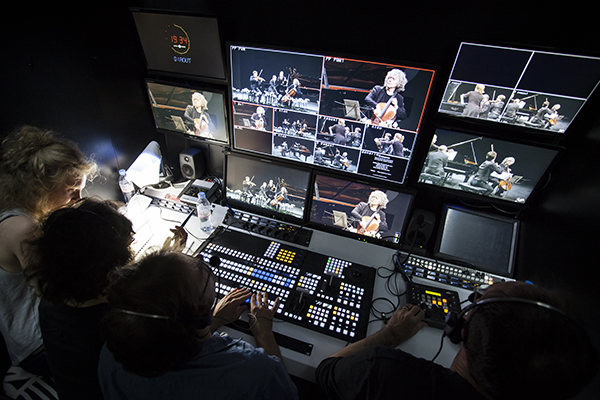Special Reports
How it works, from script to stream
![]() Planning for a live stream begins weeks in advance at Medici.tv’s Paris headquarters, where a small team unravels a web of performing rights. Artists are usually happy to forgo any payment for streams that are free to view; they gain performance royalties and in some cases advances for subscriber viewings, along with global exposure. “Instead of playing to a hall of 2,000 people,” says Boissière, “they play to 500,000. It’s a great opportunity to reach the worldwide community.”
Planning for a live stream begins weeks in advance at Medici.tv’s Paris headquarters, where a small team unravels a web of performing rights. Artists are usually happy to forgo any payment for streams that are free to view; they gain performance royalties and in some cases advances for subscriber viewings, along with global exposure. “Instead of playing to a hall of 2,000 people,” says Boissière, “they play to 500,000. It’s a great opportunity to reach the worldwide community.”
Boissière, himself a former chief of the Naïve label, says record companies are also happy to release artists in exchange for the exposure and ability to use video excerpts for promotion.
Paperwork done, the production team is assembled. In Europe, Medici.tv works regularly with one or two companies that provide teams. In the U.S., it flies in a director and script director who assemble a team of 25 to 30: typically, four or five artistic advisers, 10 camera operators, up to 20 equipment loaders, two or three sound engineers, and two or three technicians to oversee the streaming via satellite or fiber-optic cable.
 On site, the pace picks up. “There is just a camera rehearsal and sound check on the day of the concert, and it is rarely of the full program,” Boissière says. Instead, there is intensive teamwork. ‘”It is a question of confidence, and there needs to be an understanding of the music among the director, script director, and camera operators. We are showing what the audience in the hall cannot see: the face of the conductor, the eyes of the second flute as he listens to the principal flute’s solo.” Showing the human aspect and the emotion, he says, “adds value.”
On site, the pace picks up. “There is just a camera rehearsal and sound check on the day of the concert, and it is rarely of the full program,” Boissière says. Instead, there is intensive teamwork. ‘”It is a question of confidence, and there needs to be an understanding of the music among the director, script director, and camera operators. We are showing what the audience in the hall cannot see: the face of the conductor, the eyes of the second flute as he listens to the principal flute’s solo.” Showing the human aspect and the emotion, he says, “adds value.”
Over the past three years there has been a dramatic evolution of tiny robotic cameras to put viewers in the center of the stage action. On average, an opera will use ten or 11 cameras, a big orchestral work or one with choir will use eight or nine, and the average is about seven.
 Australian-born, U.K. resident Phillip Sommerich has been writing about the entertainment and media sectors for nearly 35 years with an emphasis on classical music. He is the recording industry correspondent for Classical Music magazine and has written for Billboard, Music Week, Music & Musicians, BBC Music, The Guardian newspaper, and others.
Australian-born, U.K. resident Phillip Sommerich has been writing about the entertainment and media sectors for nearly 35 years with an emphasis on classical music. He is the recording industry correspondent for Classical Music magazine and has written for Billboard, Music Week, Music & Musicians, BBC Music, The Guardian newspaper, and others.





 FEATURED JOBS
FEATURED JOBS

 RENT A PHOTO
RENT A PHOTO


